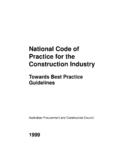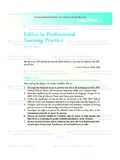Transcription of Good Practice Guide to Placement PlanninG
1 Care Forum WalesSPECIAL INTEREST FORUM RESIDENTIAL CHILD CAREGood Practice Guide to Placement PlanninG e3137 Care Forum good Practice Guide 111/01/2012 13:36 good Practice Guide to Placement PlanninG Contents pageIntroduction and Foreword from Gwenda Thomas, AM, Deputy Minister for Children and Social Services31 Purpose of this guidance42 Rationale for An audit of the Welsh Government guidance Towards a Stable Life and a Brighter Future undertaken by CSSIW in 2009 CSSIW Chief Inspector s Annual Report 2008-200943 Children in Residential Care Identifying and Meeting the Needs of Children in Residential Care 44 Legal Context of Placement Planning55 Introduction why plan?56 The Importance of Assessment57 Assessment & Care Planning68 Considerations to which responsible authorities are to have regard 69 Identifying suitable placements using the CCSR Database 610 Children placed outside the area in which they normally reside611 Placement PlanninG process712 The initial Placement plan713 What makes a good plan?
2 814 Multi-disciplinary working815 The Model9 Summary10 References10 Appendix 1 Person Centered PlanninG (PCP)10 e3137 Care Forum good Practice Guide 211/01/2012 13:36 good Practice Guide to Placement PlanninG3 ForewordThe Welsh Government is committed to improving the life chances of looked after children/young people in Wales and Placement stability remains a key objective. I believe that good PlanninG and commissioning of quality placements are essential to achieving better outcomes for looked after children/young would like to thank the Care Forum Wales Residential Child Care Special Interest Forum for the time and skill they have invested in ensuring each child/young person, although unable to live at home are encouraged to reach their full we will continue to work to form a powerful force to champion the rights and entitlements of all children/young people who spend time in residential Thomas AM Deputy Minister for Children and Social Services May 2011 IntroductionThe residential Child Care Special Interest Forum was launched by Gwenda Thomas, AM, the Deputy Minister for Children and Social Services in November 2009 at the City Hall.
3 Aim of the Special Interest Forum is to raise the profile of residential child care and education within Wales and to provide a link between practitioners, commissioners and regulators with the purpose of promoting evidence based Practice that will ensure residential child care is used as a specific positive intervention for children and young people as part of the continuum of care. The Forum works with the Care Council for Wales and CSSIW for the continued development, implementation and monitoring of high quality national Steering Group consisting of representatives from private, statutory and third sector providers meet on a bi-monthly basis at Coleg Powys, Newtown. The Forum also periodically meets with representatives from the Welsh Government, Care Council for Wales and CSSIW to consider issues of common interest and ensures that the views and interests of the sector are fully more information or to become involved in the Steering Group please contact Steve Elliott, Chair on 01978 313777 or email: e3137 Care Forum good Practice Guide 311/01/2012 13:36 good Practice Guide to Placement PlanninG41.
4 Purpose of this guidanceIt is recognised and accepted that in order to achieve better outcomes for children /young people, Placement PlanninG needs to clearly focus on identifying how their day to day needs are met. The Welsh Government remain committed to Placement choice and for some children/young people, residential care will be the best option. As such residential staff have a key role to play in the process of Placement PlanninG for the children/young people in their guidance for residential child care staff is intended to support and provide best Practice in Placement PlanninG , set alongside the roles and responsibilities of the local Rationale of An audit of the Welsh Government guidance Towards a Stable Life and a Brighter Future undertaken by CSSIW in 2009 Concluded The PlanninG for, and review, of placements remains poor and in many cases does not comply with the Children Act 1989. There are no significant differences in the quality of this between Welsh and English authorities; the evidence would suggest that the pre Placement PlanninG elements of Towards a Stable Life and Brighter Future which apply to Welsh authorities but which would be good Practice for English authorities are not embedded.
5 A similar judgment can be reached about the cross border elements of the policy which relate to health provision; pre Placement PlanninG is poor, documentation about needs that you would expect to be available to homes/schools, in order for them to properly understand the needs of children/young people and meet them, was not consistently in place. Specifically, the evidence of pre PlanninG for the health and education of children/young people was poor; care plans were in place for less then three quarters of the sample, 72 per cent, and reviews taking place as required in 78 per cent; The CSSIW Chief Inspector s Annual Report 2008-2009 Reported under priorities for improvement -In 2008-2009, 27% of inspections reported inadequacies in Placement PlanninG for children/young people. This reflects the previous year s position. In order to achieve the best outcomes for children/young people, Placement plans need to clearly identify how the day to day care of the child/young person meets the aim of the care plan.
6 This is an area that needs the sustained attention of both managers and providers. Improvements are required in: the quality of information including that provided by the local authorities who have placed the child/young person; the timeliness of Placement plans and reviews;the specific actions needed to achieve the best outcome for the child/young person 3. Children in Residential Care - Identifying and Meeting the Needs of Children in Residential Residential staff will either live with, or spend the majority of their working time with a child/young person placed in residential care and it s fair to say that they have a lot to contribute to the care PlanninG process. It is a requirement within the Children s Homes Regulations that the carer or link worker should routinely be asked to contribute to any assessment taking place, and in making Residential staff have an important role as advocates for children/young people, ensuring that they have a say in what is happening and what is written in assessments and Placement plans.
7 This might mean simply explaining things again to a child/young person, answering questions for this could mean communicating on behalf of a child/young person who doesn t feel able to express their views on paper or in meetings. This is different to the role of independent professional advocacy that is provided to support a young person independent of their Placement . The relevance of utilising a Person Centered PlanninG Framework in working with children/young people in a residential setting is currently being explored (see Appendix 1). Identifying and meeting the needs of looked after children/young people can feel overwhelming and a bit daunting. The looked after children/young people population is diverse and each child/young person will have different and often complex As well as looking at the internal world of a child/young person, considerations have to be given to the environment in which the child/young person lives; past, present and future.
8 There may be needs that have to be addressed as a result. There also has to be an awareness that looked after children/young people may face discrimination on many levels; because of their ethnicity, culture, religion or beliefs, their gender, sexuality, age or because they are in the care As a child/young person even if they are near adulthood there are safety issues to consider; do they know how to look after themselves, what to do if they find themselves in a difficult situation, and how to keep themselves safe when they are on their own or with friends. For children/young people who require long-term support post 18, securing support from adult services may not be straightforward as the criteria for services may significantly differ from that set for children/young people and evidence suggests that the support offered to care leavers is patchy and A large body of evidence suggests that problem behaviours presented by children/young people with learning disabilities are best assessed and modified within a behaviour analytic model.
9 This model demonstrates that all problem behaviour has a function, for example, gaining attention, access to tangibles, escape from demands or sensory stimulation. Problem behaviour can be assessed via a functional analysis by directly observing the antecedent events that precede the behaviour and the consequences that follow. Once these events have been shown to reliably e3137 Care Forum good Practice Guide 411/01/2012 13:36 good Practice Guide to Placement PlanninG5occur the problem behaviour can then be replaced, through a skill development programme, with an appropriate behaviour that serves the same The role of residential care in meeting the needs of children/young people cannot be underestimated. As Williams (2005) citing Rutter (1991) states; Rutter (1991) demonstrated that environment and interventions can influence and compensate for damaging experiences providing new pathways and opportunities for children to develop and achieve.
10 Acquiring knowledge about child and adolescent development, attachment theory, resilience and understanding risk factors are essential to care PlanninG . Whilst this Practice document does not cover these areas in any detail, there is already a lot of literature available that can help in building knowledge, skills and confidence. A sample of this literature is listed in the bibliography at the end of this Legal Context of Placement Regulation 4 - Placement of Children (Wales) Regulations 2007 provides for the making of arrangements for accommodation and maintenance of children/young people, the promotion of their welfare and for the PlanninG of Regulation 5 Placement of Children (Wales) Regulations 2007 makes provision for the matters to be considered by a responsible authority when making arrangements to place a child/young person, including the procedures to be followed where a Placement outside the area in which a child/young person normally lives is being considered.








